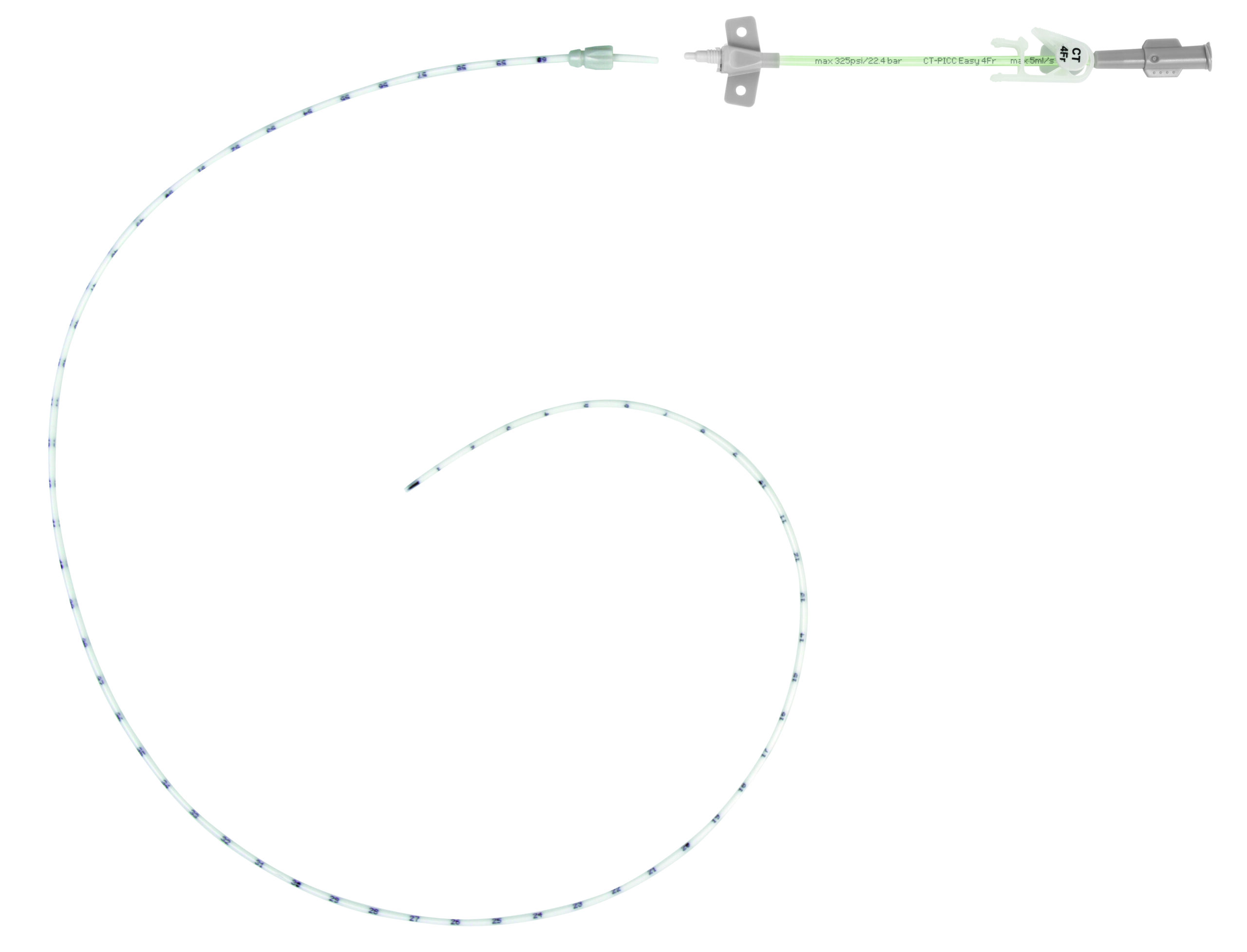
Lifecath CT PICC Easy
Lifecath CT PICC Easy is a single lumen peripherally inserted central venous catheter in BIOSTABLE POLYURETHANE for mid to long-term central venous access, the length of which can be adjusted by the physician at its proximal end. Lifecath CT PICC Easy is compatible with pressure injection at 325 psi and up to 6ml/sec. This catheter…
About Product
Lifecath CT PICC Easy is a single lumen peripherally inserted central venous catheter in BIOSTABLE POLYURETHANE for mid to long-term central venous access, the length of which can be adjusted by the physician at its proximal end. Lifecath CT PICC Easy is compatible with pressure injection at 325 psi and up to 6ml/sec. This catheter is inserted with a MST peel away introducer (Micro-Seldinger technique) allowing to puncture the vein with a very thin needle (21G).
Lifecath CT PICC Easy is supplied in a rigid blister pack (with double packaging) containing:
- 1 totally radiopaque catheter (60cm long) in biostable polyurethane with temporary wings
- 1 metallic stylet to make the catheter more rigid and thus make insertion easier
- 1 “T” proximal connector. The lateral port of the T connector can be used to inject saline solution
- 1 detachable extension line with a Robert clamp
- 1 safety introducer needle 21G x 7cm
- 1 straight nitinol guidewire 50cm, Ø 0.46mm with thumb feed J straightener
- 1 peelable sheath + dilator 7cm
- 1 Luer slip syringe 10ml
- 1 slide clamp
- 1 measuring tape
- 1 Grip-lok, securement device
- 1 Bionector
- 1 safety scalpel
Lifecath CT PICC Easy advantages:
- Preserved distal tip
- Exact position of the tip at the Cavo-atrium junction
- Black mark of the tip confirming the complete withdrawal of the catheter
- Centimetric marking
- No excess of extracutaneous line
- No re-placement of the PICC line
Lifecath CT PICC Easy is ideal for an insertion technique using ECG tip location method using Vygocard. This method is quick accurate and saves the cost of a X-ray.
Advantages of PICC lines:
- Avoid repeated and painful venipunctures with I.V. cannula and the trauma associated with these punctures, as well as damage and loss of peripheral veins.
- Peripheral insertion of a central venous catheter reduces potential risks in comparison to jugular or subclavian insertion (pneumothorax, hemothorax, arterial puncture, pinch-off syndrome in a clavicular approach, air embolism, etc.)
- The catheter can be used with outpatients, for long-term therapies delivered at home.
| Guidewire | Introducer | Catheter | |||||||||||
|---|---|---|---|---|---|---|---|---|---|---|---|---|---|
| Code | Ø mm |
Length cm |
Length cm |
Diameter Fr |
Length cm |
Ø Fr |
Int. Ø mm |
Ext. Ø mm |
Flow rate ml/min |
Prim. vol. ml |
Max. pressure psi |
Max. flow rate ml/s |
|
| V021292213 | 0.46 | 50 | 7 | 3 | 60 | 3 | 0.60 | 1.00 | 3.0 | 0.6 | 325 | 1 | |
| V021292214 | 0.46 | 50 | 7 | 4 | 60 | 4 | 0.90 | 1.35 | 14 | 0.9 | 325 | 5 | |
| V021292215 | 0.46 | 50 | 7 | 5 | 60 | 5 | 1.1 | 1.67 | 28.0 | 1.00 | 325 | 6 | |
- Contains Latex: No
- Contains DEHP: No
- Contains biogical or animal-based product: No
- Non-pyrogenic: Yes

